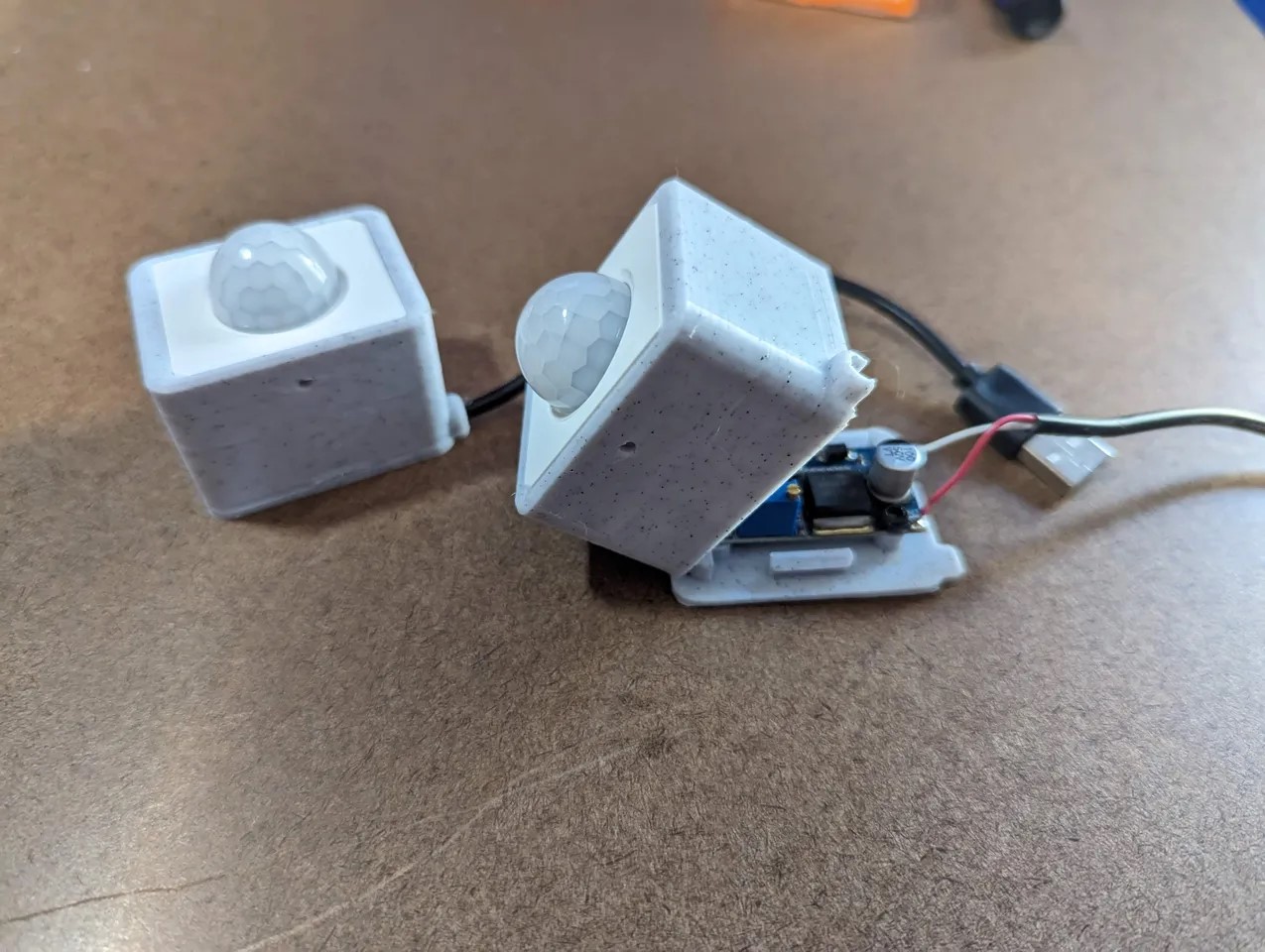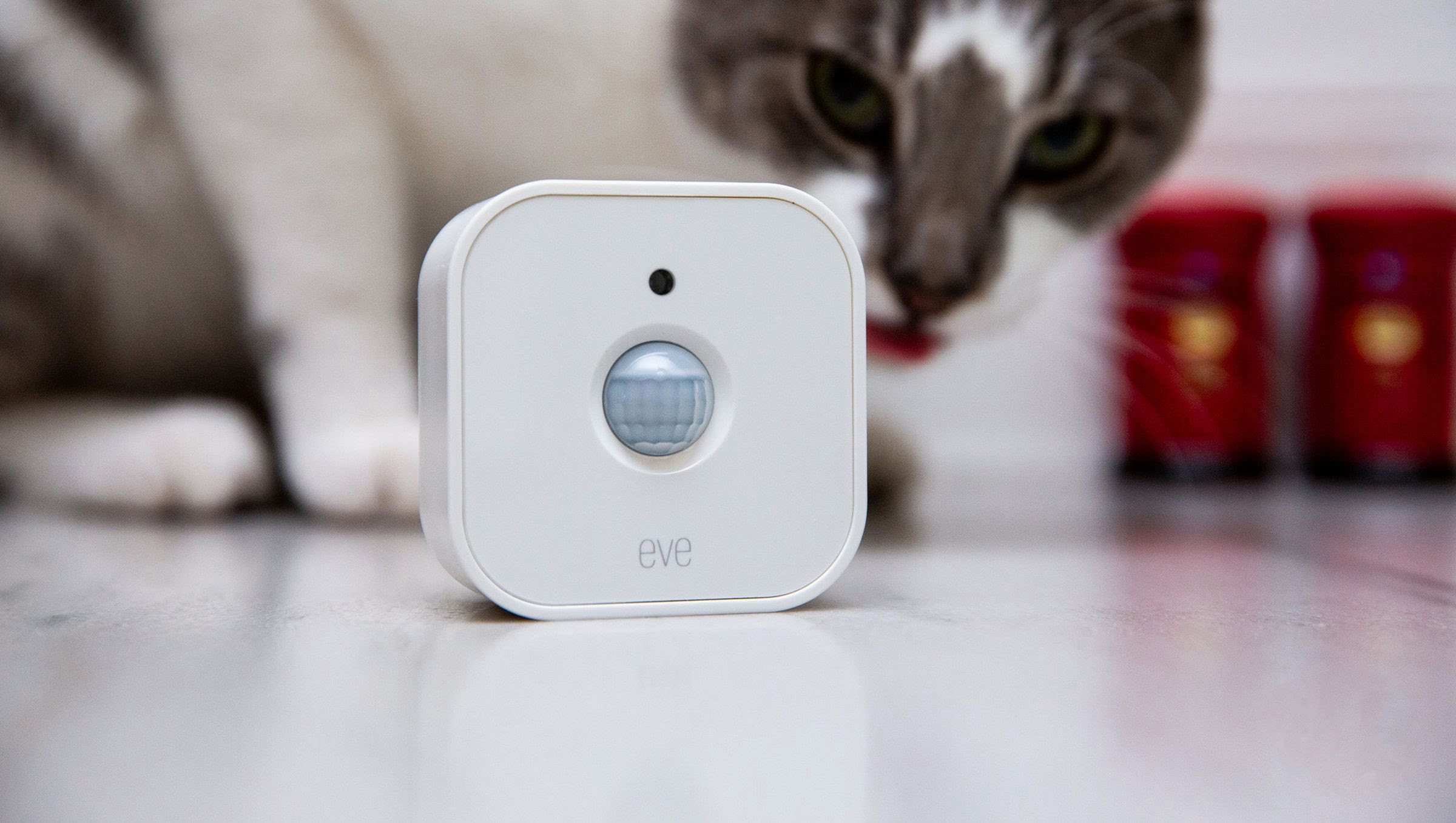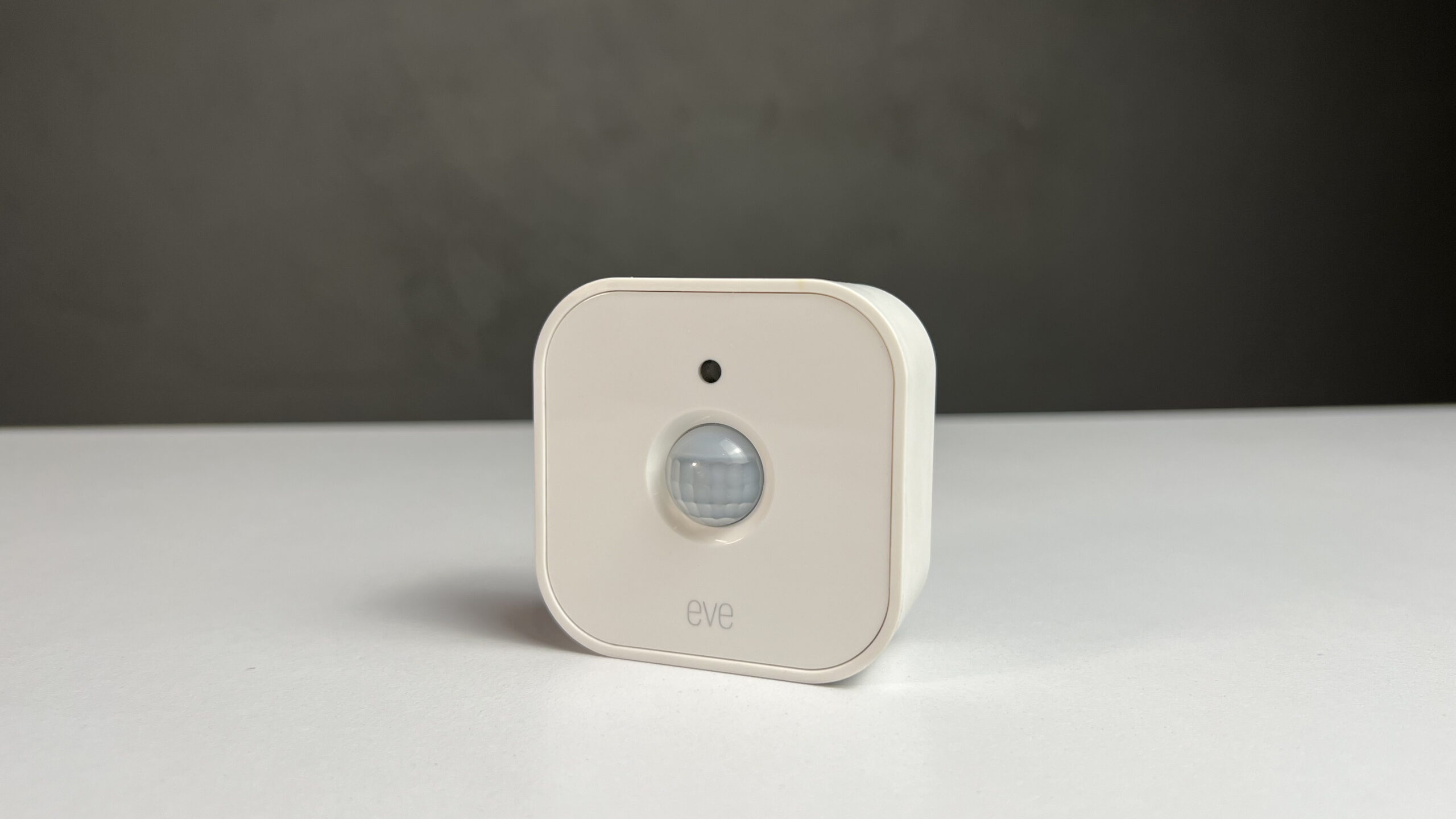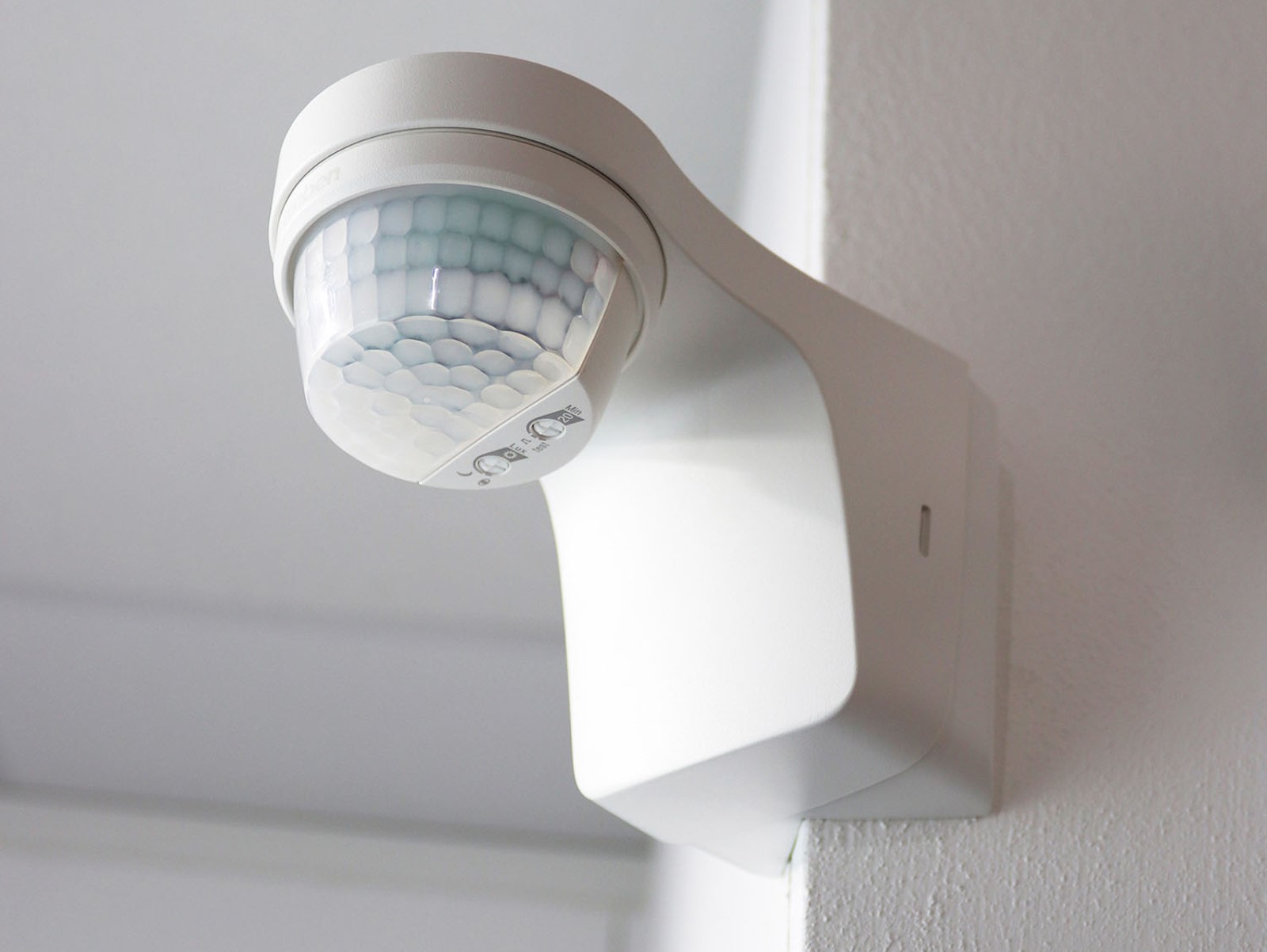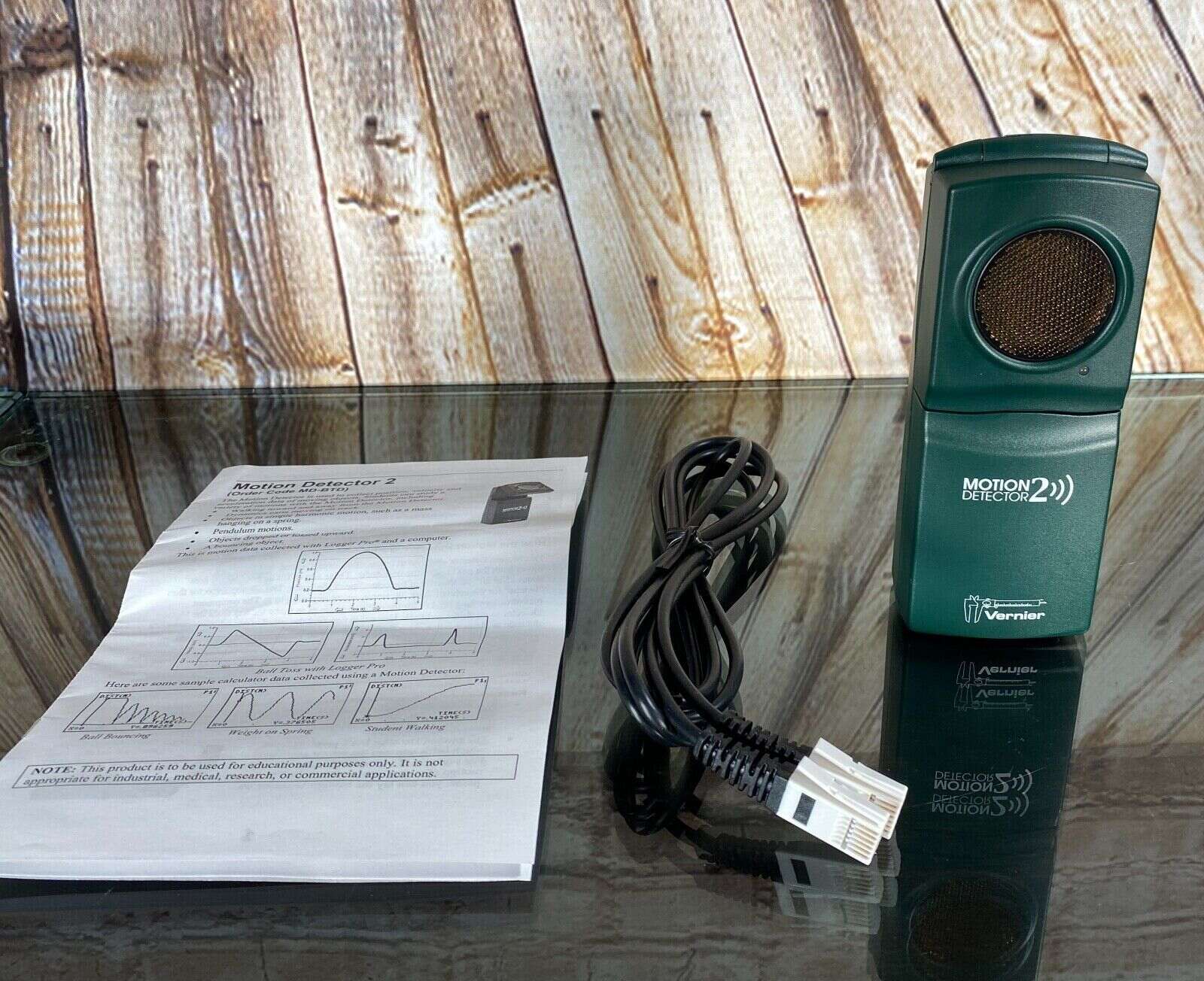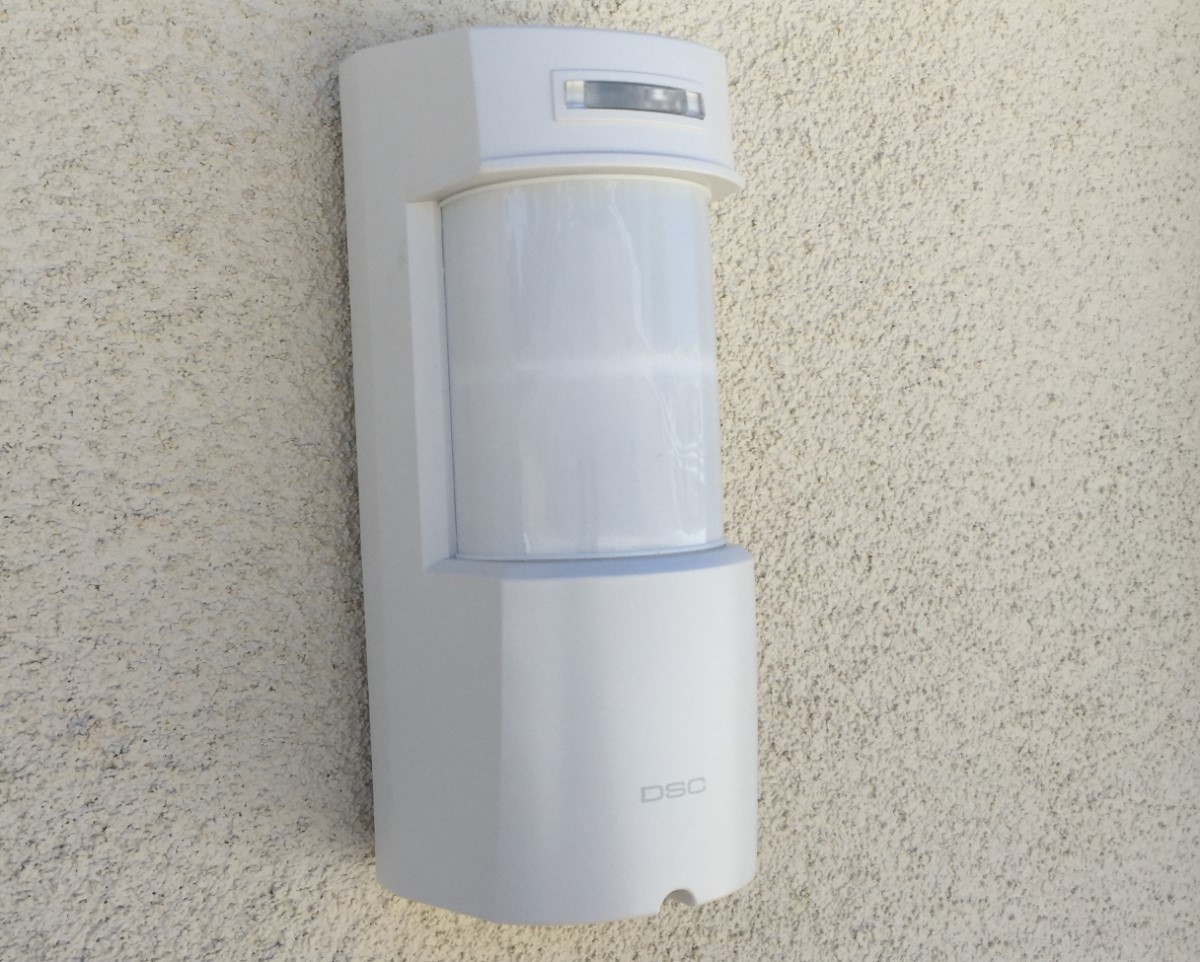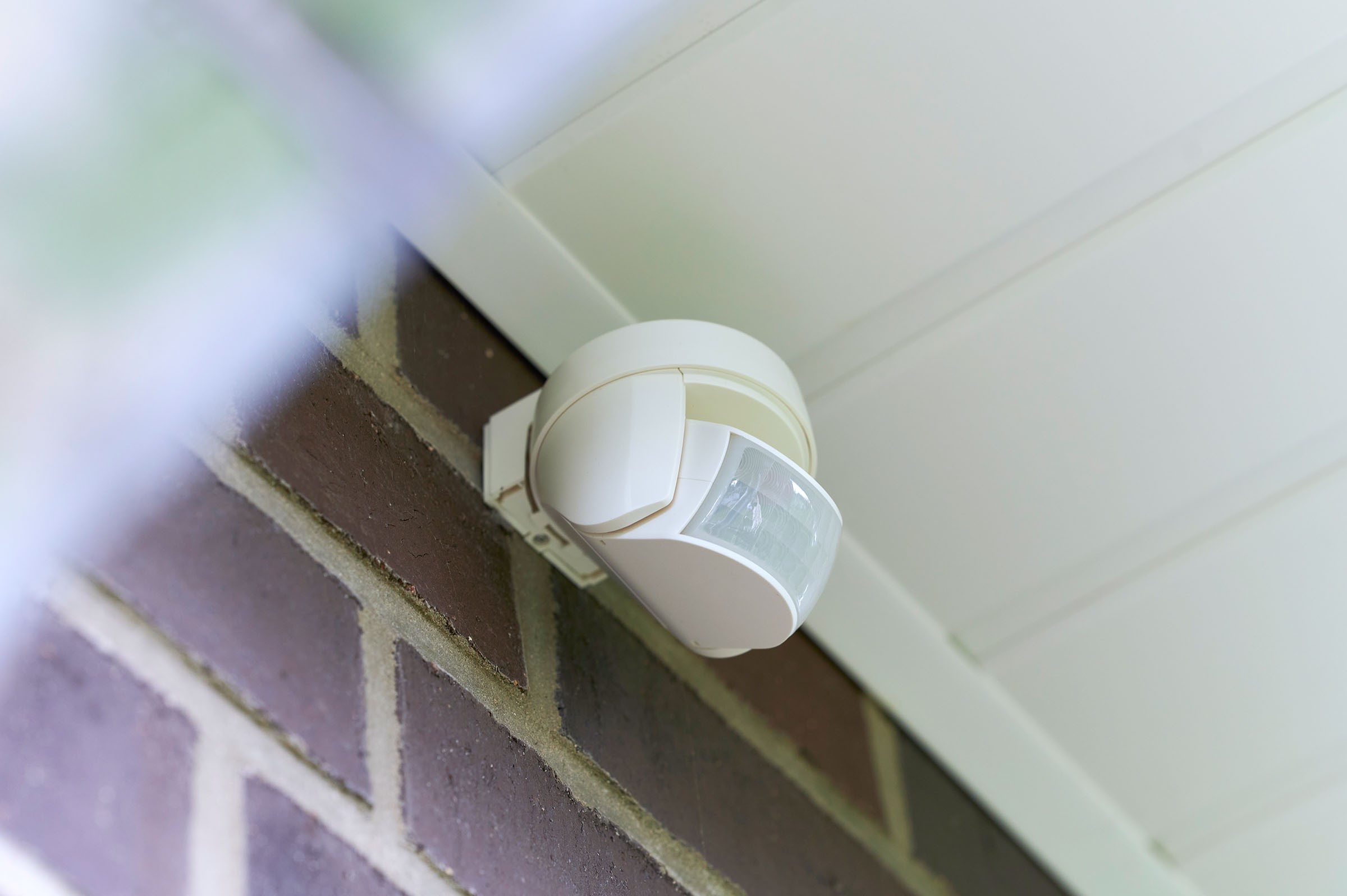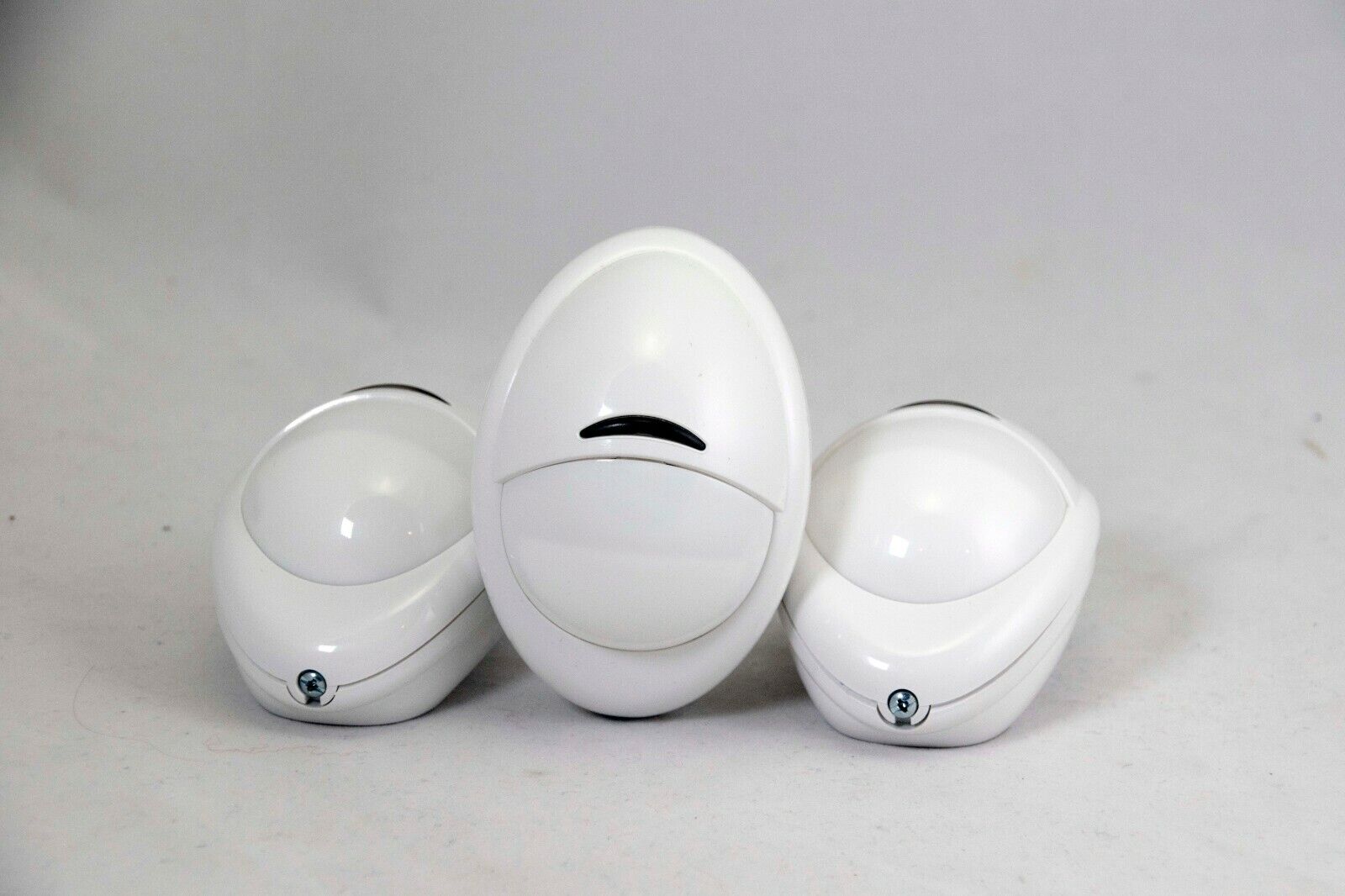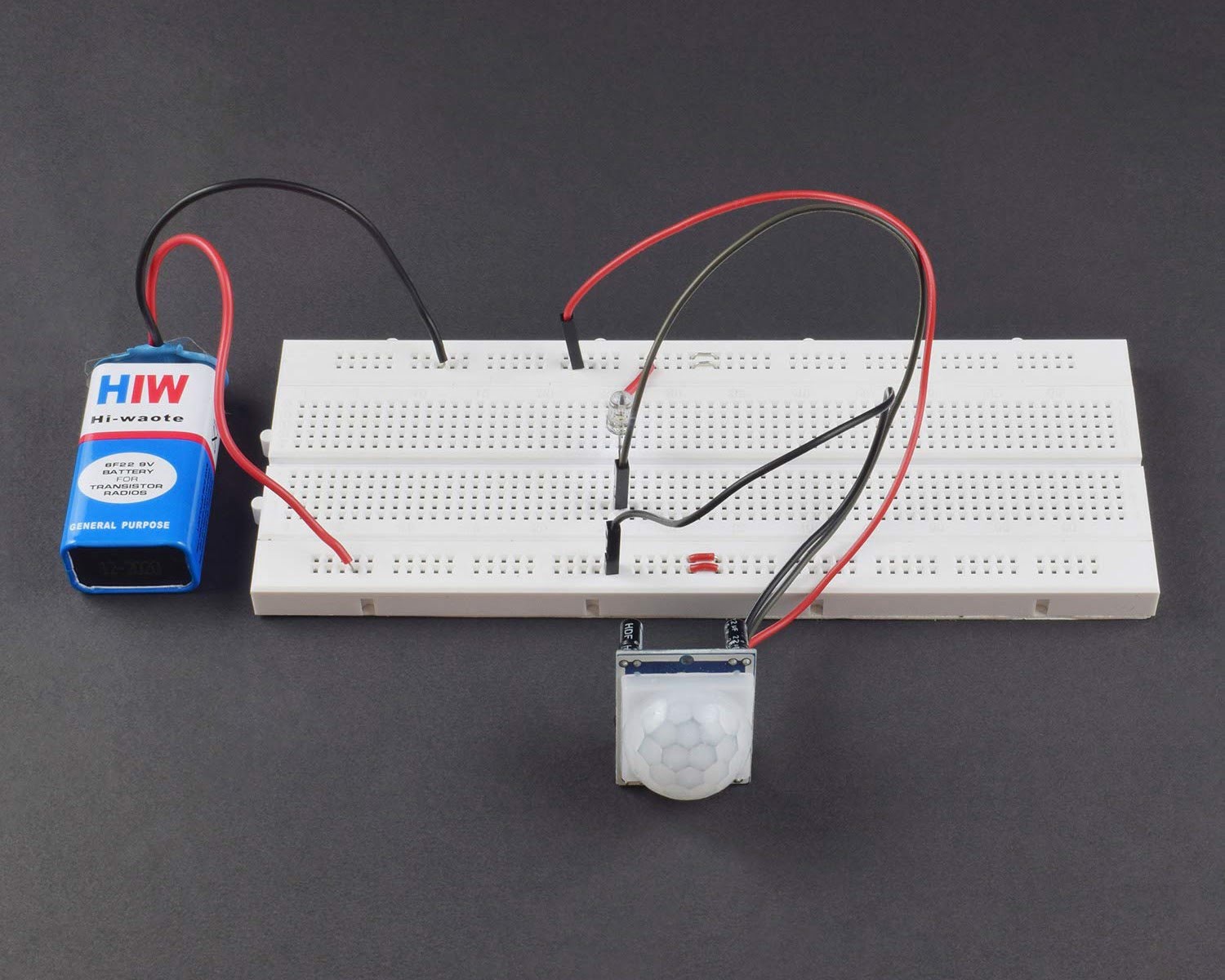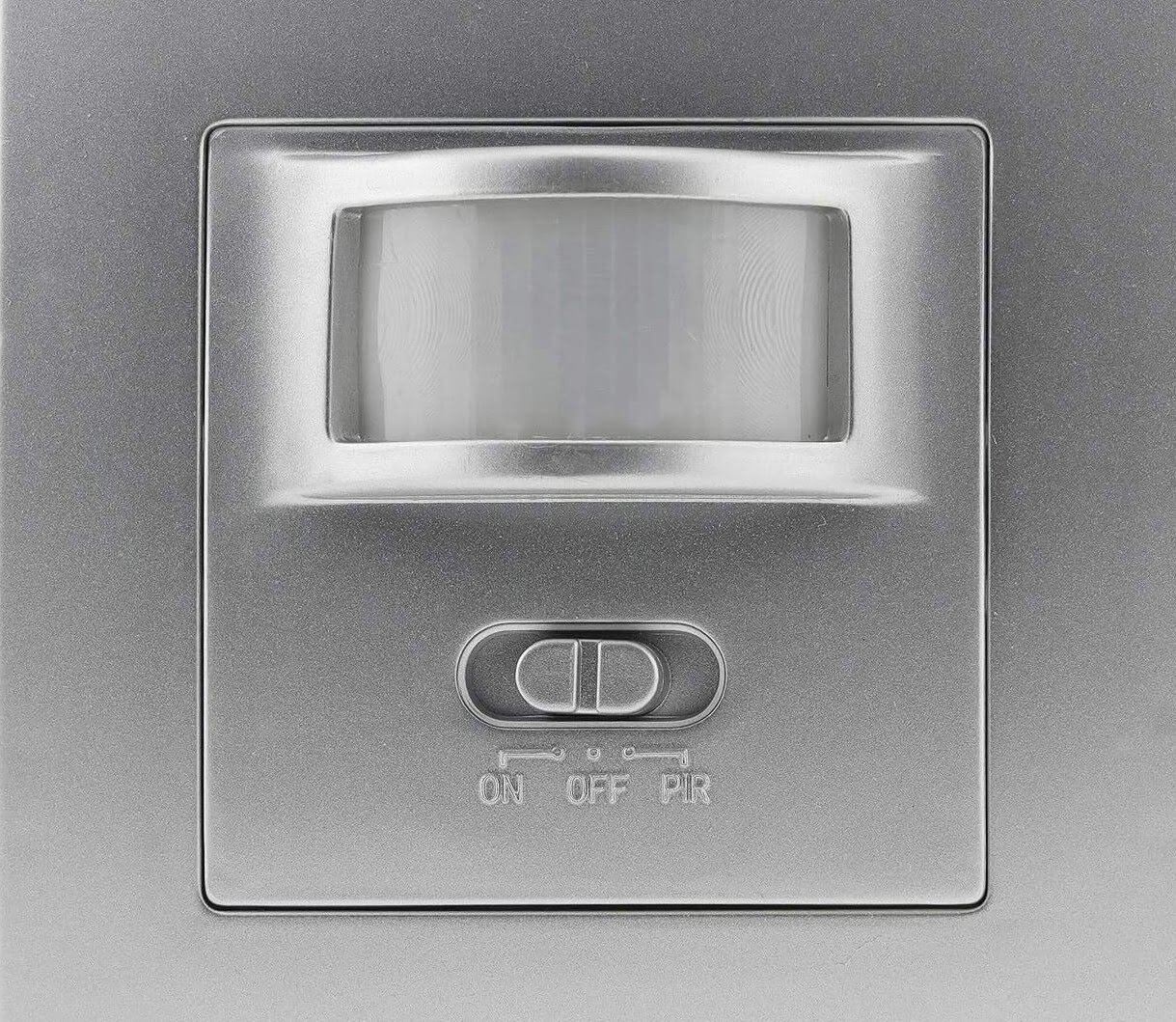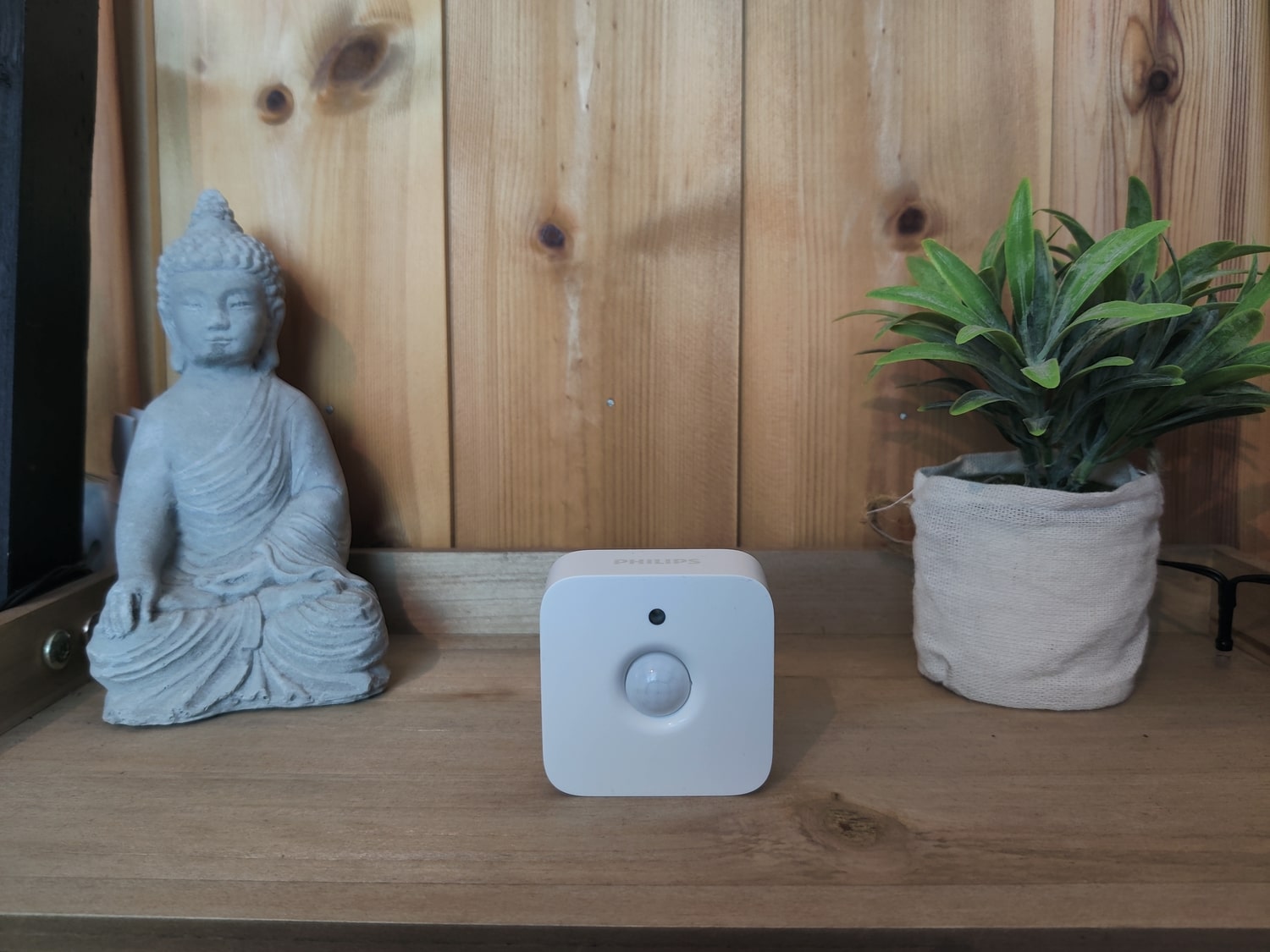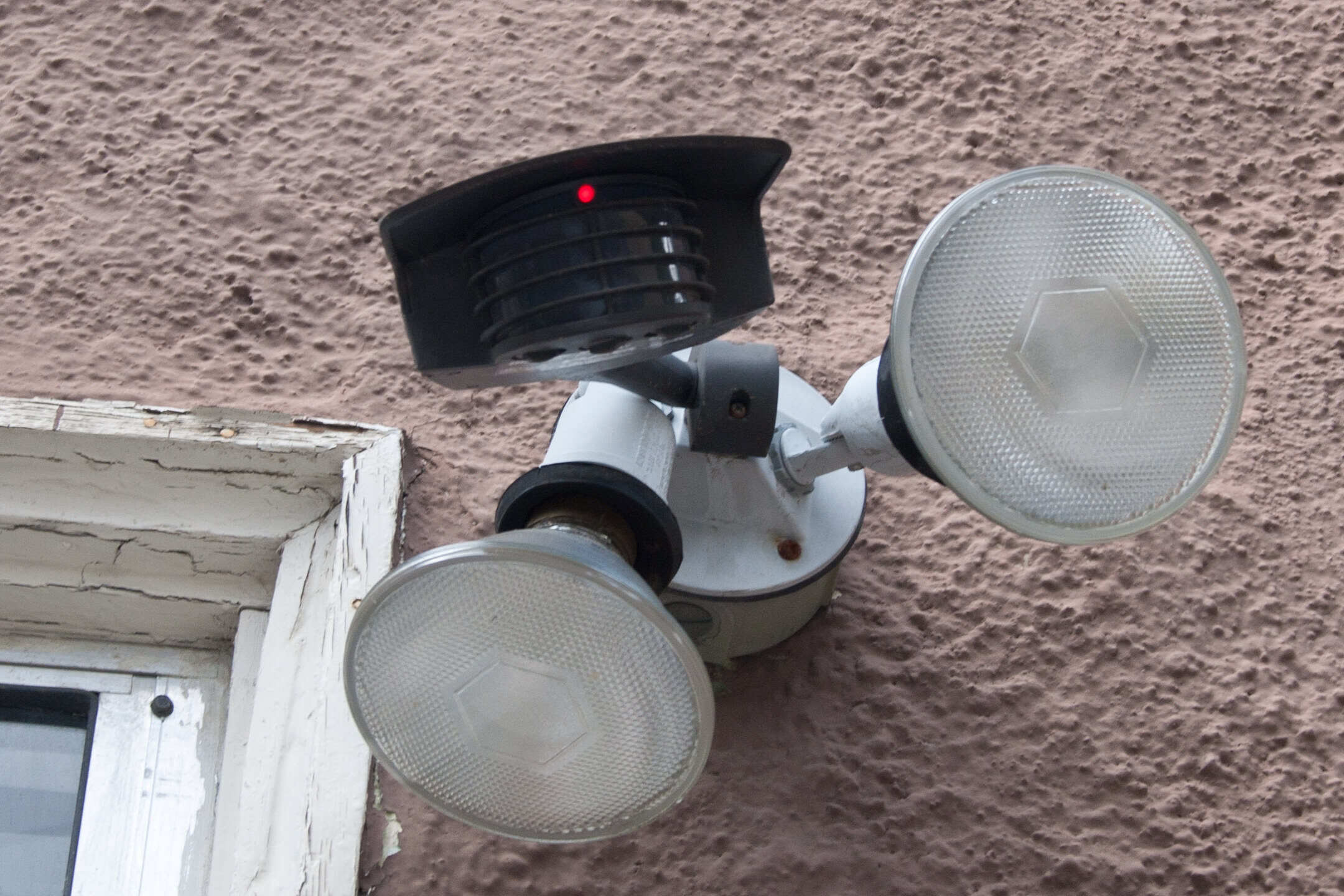Home>Home Security and Surveillance>How To Bypass A Motion Detector


Home Security and Surveillance
How To Bypass A Motion Detector
Modified: March 6, 2024
Learn how to bypass a motion detector in your home security system with our step-by-step guide. Keep your surveillance system secure and minimize false alarms.
(Many of the links in this article redirect to a specific reviewed product. Your purchase of these products through affiliate links helps to generate commission for Storables.com, at no extra cost. Learn more)
Introduction
Welcome to the world of home security and surveillance! With rising concerns about safety and the growing need for personal protection, many homeowners are turning to motion detectors as a crucial component of their security systems. Motion detectors act as a first line of defense, alerting you to any potential intruders or suspicious activity on your property.
In this article, we will take a comprehensive look at motion detectors, their various types, and how they work. We will also explore the factors that can affect their performance and discuss the potential risks and legal considerations associated with their use.
Furthermore, we will delve into the fascinating realm of bypassing motion detectors. While the primary purpose of these devices is to detect movement and trigger alarms, there may be situations where you need to temporarily disable or bypass them. We will explore different methods to achieve this without compromising the overall security of your home.
It is important to note that the methods discussed here are for informational purposes only. Circumventing or disabling a motion detector should only be done in scenarios where you have legal authority or in emergency situations. It is crucial to prioritize the safety and security of yourself and your loved ones.
So, let’s dive in and explore the world of motion detectors and the various ways to bypass them if necessary. Whether you’re a homeowner, renter, or simply interested in understanding home security systems, this article will provide valuable insights and knowledge to help you make informed decisions.
Key Takeaways:
- Motion detectors are crucial for home security, but bypassing them should only be done in emergencies or with legal authority. Methods include adjusting sensitivity and using obstacles, but always prioritize safety and legality.
- Hacking or jamming a motion detector is illegal and unethical. Responsible use of motion detectors involves adjusting sensitivity and using obstacles, always prioritizing safety and legality.
Read more: How To Fix A Motion Detector
Understanding Motion Detectors
Motion detectors, also known as motion sensors, are electronic devices designed to detect movement in their surrounding areas. They are a crucial component of home security systems, providing an added layer of protection and helping to deter potential intruders.
These devices work by sensing changes in the environment, such as heat or movement, and triggering an alarm or alert to notify the homeowner or security system. They are typically installed in strategic locations such as entryways, hallways, and outdoor areas to monitor and detect any unauthorized activity.
There are different types of motion detectors available, each utilizing different technologies to detect motion:
- Passive Infrared (PIR) Sensors: PIR sensors are the most common type of motion detectors used in home security systems. They work by detecting changes in infrared radiation, usually emitted by a human body in the form of heat. When a person moves within the sensor’s range, the temperature difference triggers an alarm.
- Microwave Sensors: Microwave sensors emit continuous microwave signals and detect any changes in the reflected waves caused by moving objects. These sensors are highly sensitive and work well for larger areas but can be affected by environmental factors such as wind or rain.
- Ultrasonic Sensors: Ultrasonic sensors emit high-frequency sound waves and detect any changes in the reflected waves caused by movement. They are ideal for detecting motion in confined spaces but can be affected by objects or obstacles that block the sound waves.
- Dual Technology Sensors: Dual technology sensors combine two types of sensing technologies, such as PIR and microwave or PIR and ultrasonic, to minimize false alarms. Both technologies must detect motion simultaneously to trigger the alarm.
In addition to their various types, motion detectors come in different forms, including ceiling-mounted sensors, wall-mounted sensors, and outdoor sensors. Each type of sensor has its own range, angle of detection, and sensitivity settings, allowing homeowners to customize their security systems based on their specific needs and the layout of their property.
Understanding the basics of motion detectors and the different types available is crucial for selecting the right device for your home security system. By choosing the appropriate type and strategically placing the sensors, you can ensure optimal security coverage and peace of mind.
Common Types of Motion Detectors
When it comes to home security systems, there are several types of motion detectors available on the market. Understanding the differences between these types can help you choose the one that best suits your needs. Let’s take a closer look at some of the most common types of motion detectors:
- Passive Infrared (PIR) Sensors: PIR sensors are the most widely used type of motion detector. They work by detecting changes in infrared radiation emitted by objects in their field of view. When a person or animal moves within the sensor’s range, the sensor detects the change in temperature and triggers an alarm. PIR sensors are known for their accuracy and reliability and are ideal for indoor use.
- Microwave Sensors: Microwave sensors emit continuous microwave signals and measure the reflection of these signals. When an object moves within their detection range, the reflected signals change, triggering an alarm. Microwave sensors are highly sensitive and can detect motion through walls and objects, making them suitable for larger areas and outdoor use. However, they can be affected by environmental factors such as wind or rain, leading to false alarms.
- Ultrasonic Sensors: Ultrasonic sensors emit high-frequency sound waves and detect the reflection of these waves. When an object moves within the sensor’s range, the reflected waves change, triggering an alarm. Ultrasonic sensors are ideal for detecting motion in confined spaces and can cover a wider area. However, they can be affected by objects or obstacles that block the sound waves, leading to false alarms.
- Active Sensors: Active sensors are another type of motion detector commonly used in outdoor settings. They emit beams of infrared light between a transmitter and a receiver. When an object enters the detection area and blocks the light beam, the sensor triggers an alarm. Active sensors are highly reliable and can cover longer distances, making them suitable for monitoring large outdoor areas.
- Dual Technology Sensors: Dual technology sensors combine two or more sensing technologies, such as PIR and microwave or PIR and ultrasonic, to minimize false alarms. These sensors require both technologies to detect motion simultaneously in order to trigger an alarm. Dual technology sensors provide enhanced accuracy and reliability, making them ideal for areas with high levels of activity or environmental variations.
It’s important to consider factors such as the size of the area to be monitored, the desired level of sensitivity, and the potential for false alarms when selecting a motion detector for your home security system. Consulting with a professional or conducting thorough research can help you determine the best type of motion detector for your specific needs.
Factors Affecting Motion Detectors
Motion detectors are designed to detect movement and trigger alarms, but there are several factors that can affect their performance. Being aware of these factors can help you optimize the effectiveness of your motion detectors and ensure reliable security coverage. Let’s explore some of the key factors that can influence the operation of motion detectors:
- Placement and Angle: The placement and angle of the motion detectors are crucial for their proper functioning. It’s important to position the sensors in areas where they have a clear line of sight and can monitor the desired area effectively. They should be installed at a height and angle that provides optimal coverage and minimizes blind spots.
- Sensitivity Settings: Motion detectors usually come with adjustable sensitivity settings. Setting the sensitivity too low may result in the sensor not picking up small or slow movements, while setting it too high might cause false alarms triggered by small pets or moving objects like curtains. It’s important to adjust the sensitivity according to the specific requirements of the environment being monitored.
- Pets: If you have pets in your home, their movement can trigger false alarms. To avoid this, you can consider using pet-friendly motion detectors that are specifically designed to ignore the movement of small animals. These detectors use weight or size thresholds to differentiate between human and pet movement.
- Environmental Factors: Various environmental factors can have an impact on the performance of motion detectors. Changes in temperature, humidity, and air movement can affect the sensitivity and reliability of the sensors. Additionally, sources of heat or cold drafts should be avoided to prevent false alarms. It’s important to consider these factors when installing motion detectors in different areas of your home.
- Obstructions and Interference: Physical obstructions, such as furniture, curtains, or plants, can block or interfere with the detection range of motion detectors. It’s essential to ensure that the sensors have a clear line of sight and are not obstructed by objects in the area being monitored. Additionally, electronic devices that emit similar signals, such as wireless routers or other security equipment, can cause interference and impact the performance of motion detectors.
By considering these factors and taking appropriate measures, such as positioning the sensors correctly, adjusting sensitivity settings, and addressing potential obstructions or interference, you can significantly enhance the performance and reliability of your motion detectors. Regular maintenance and testing of the system can also help identify and rectify any issues or limitations that may affect their functionality.
Potential Risks and Legal Considerations
While motion detectors are valuable tools for enhancing home security, it is important to be aware of potential risks and legal considerations associated with their use. Understanding these factors will help ensure you stay within the boundaries of the law and protect the privacy and rights of others. Let’s explore some of the key considerations:
- Privacy Concerns: Motion detectors are designed to monitor activity and detect movement within their range. However, this can raise privacy concerns, especially if the sensors are positioned in areas where they might inadvertently capture sensitive or private information. It’s important to be aware of the areas you choose to monitor and consider the privacy implications for yourself and others.
- Legal Regulations: Different jurisdictions may have specific legal regulations regarding the use of motion detectors. It is important to familiarize yourself with the laws and regulations applicable in your area. Some areas may require disclosure of surveillance systems, especially if they record audio or video footage. Compliance with local laws and regulations is essential to avoid legal consequences.
- Neighborhood Boundaries: When installing outdoor motion detectors, it’s important to ensure that the sensors are not pointed directly into neighbors’ properties or public areas. Respecting the boundaries of neighboring properties is crucial to avoid privacy infringement and potential disputes.
- False Alarms: Motion detectors are designed to minimize false alarms, but they can still be triggered by factors such as pets, lighting changes, or environmental conditions. Frequent false alarms can lead to annoyance for both homeowners and neighbors. It’s important to properly adjust the sensitivity settings, position the sensors correctly, and perform regular maintenance to minimize false alarms.
- Professional Installation: Depending on the complexity of your home security system, it may be advisable to seek professional installation for motion detectors. Professional installers have the expertise to properly position and configure the sensors for optimal performance, while also ensuring compliance with local regulations.
By being aware of these potential risks and legal considerations, you can proactively take steps to mitigate them and ensure the responsible and lawful use of motion detectors. It is always important to prioritize the privacy and well-being of yourself, your family, and the community in which you reside.
Read more: How To Make A Motion Detector
Ways to Bypass a Motion Detector
While the primary purpose of motion detectors is to detect movement and trigger alarms, there may be situations where you need to temporarily bypass them. It’s important to note that bypassing a motion detector should only be done in scenarios where you have legal authority or in emergency situations. Here are some methods that can be used to bypass a motion detector:
- Adjusting the Sensitivity: Most motion detectors allow you to adjust their sensitivity settings. By reducing the sensitivity, you can make the sensor less responsive to small movements, such as the movement of curtains or pets. However, be cautious and find the right balance so that it still detects potential intruders.
- Using Obstacles or Barriers: Another method to bypass a motion detector is to place obstacles or barriers in the detection area. For example, you can use large objects, such as furniture or boxes, to block the sensor’s line of sight, preventing it from detecting your movement.
- Jamming the Signal: It’s important to note that intentionally interfering with the operation of a motion detector by jamming its signal can be illegal and should not be attempted. Jamming can disrupt the communication between the sensor and the security system, rendering it ineffective or triggering false alarms.
- Arming and Disarming Quickly: Some motion detectors have a delayed activation time, allowing you a brief window to arm and disarm the security system without triggering the alarm. By quickly arming or disarming the system, you may be able to bypass the motion detector before it becomes active.
- Using Infrared Light: Infrared light can be used as a method to bypass a motion detector. By using an infrared light source, such as an infrared LED, you can flood the area with infrared light, making it difficult for the sensor to detect any changes in temperature or movement. However, this method requires careful calibration to ensure it doesn’t trigger false alarms.
- Hacking the System: Hacking or tampering with a motion detection system is illegal and unethical. This includes trying to disable or manipulate the sensors, tampering with the wiring, or compromising the security system in any way. It’s important to respect the law and prioritize the safety and security of yourself and others.
It’s worth repeating that bypassing a motion detector is generally not recommended, as it compromises the overall security of your home. These methods should only be used in specific situations where you have legitimate authority or in emergency scenarios. Always consult with security professionals or authorized personnel to determine the best course of action for your specific circumstances.
Remember, the primary goal of motion detectors is to provide an added layer of protection to your home and ensure the safety of your family. Utilize these devices responsibly and in accordance with the law to maintain a secure living environment.
Method 1: Adjusting the Sensitivity
One of the simplest methods to bypass a motion detector is by adjusting its sensitivity settings. Most motion detectors allow you to customize the sensitivity to suit your specific needs and environment. By reducing the sensitivity, you can make the sensor less responsive to small or insignificant movements, such as the movement of curtains, pets, or foliage.
Reducing the sensitivity of the motion detector can help avoid false alarms caused by non-threatening activities, while still ensuring it detects potential intruders. However, it’s important to find the right balance when adjusting the sensitivity. If the sensitivity is set too low, the sensor may not detect actual intruders, compromising the effectiveness of your security system.
Here’s a step-by-step guide on how to adjust the sensitivity of a motion detector:
- Locate the sensitivity adjustment settings on the motion detector. This is usually located on the control panel or the back of the sensor.
- Consult the user manual or instructions provided by the manufacturer to understand how the sensitivity settings work for your specific motion detector model.
- Using a screwdriver or the designated adjustment tool, carefully turn the sensitivity dial or switch in the desired direction to reduce the sensitivity level. Each motion detector may have a different method of adjusting sensitivity, so it’s important to refer to the manufacturer’s instructions.
- Test the sensor after adjusting the sensitivity level. Walk within the detection range of the sensor to ensure it still detects your movement while being less sensitive to minor movements.
- Make additional adjustments if necessary, repeating the process until you find the optimal sensitivity level for your environment.
It’s important to note that adjusting the sensitivity level should not compromise the overall security of your home. Finding the right balance is crucial to ensure the motion detector effectively detects genuine threats while minimizing false alarms.
Remember, it’s always recommended to consult with security professionals or follow the instructions provided by the manufacturer when adjusting the sensitivity settings of your motion detector. This will ensure you make the appropriate modifications without compromising the integrity of your home security system.
You can bypass a motion detector by carefully moving through its blind spots or using a heat source to trick it into thinking there’s no movement. Be cautious and consider the legal implications of bypassing security measures.
Method 2: Using Obstacles or Barriers
An effective way to bypass a motion detector is by using obstacles or barriers to block or interfere with its line of sight. By strategically placing objects in the detection area, you can prevent the sensor from detecting your movement and triggering an alarm. This method is particularly useful when you need temporary access to an area without setting off the motion detector.
Here are some steps to follow when using obstacles or barriers to bypass a motion detector:
- Analyze the layout of the room or area where the motion detector is installed. Identify the specific location and range of the sensor to understand its coverage area.
- Determine the direction from which the motion detector would detect movement. This is usually indicated by the visible lens or sensor on the device.
- Select suitable objects or barriers that can effectively block or interfere with the sensor’s line of sight. These objects can include furniture, large boxes, plants, or curtains.
- Strategically place the selected objects or barriers in a way that obstructs the sensor’s view. Ensure that the objects are positioned in a way that makes it difficult for the sensor to see through or around them.
- Test the effectiveness of the obstacles by walking within the detection area. If the motion detector fails to detect your movement due to the presence of the obstacles, then it has been successfully bypassed.
- Remember to remove the obstacles or barriers once you no longer need to bypass the motion detector. Restoring the normal functioning of the security system is essential to maintain the overall security of your home.
It’s important to note that using obstacles or barriers to bypass a motion detector should be done carefully and responsibly. Ensure that the objects you choose to use as barriers do not pose a safety hazard or block important pathways that may be needed for emergency situations.
Additionally, keep in mind that obstructing or blocking a motion detector may compromise the overall security of your home. It should only be done temporarily and in situations where you have legitimate authority to bypass the sensor.
As with any method of bypassing a motion detector, it is always advised to consult security professionals or authorized personnel to ensure you are taking appropriate measures without compromising the integrity of your home security system.
Method 3: Jamming the Signal
It’s important to note that intentionally interfering with the operation of a motion detector by jamming its signal can be illegal and should not be attempted. Jamming refers to the act of disrupting the communication between the sensor and the security system, rendering it ineffective or triggering false alarms.
Jamming a motion detector can interfere with the vital function of the security system, potentially compromising the safety of your home and the people in it. Moreover, unauthorized signal jamming is against the law in many jurisdictions, as it can not only disrupt security systems but also interfere with other critical communication networks.
Attempting to jam a motion detector violates both ethical and legal principles, and it should not be considered as a viable method for bypassing the sensor. Rather than seeking to disable or manipulate the security system, it is recommended to explore alternative approaches that align with the law and maintain the overall security and integrity of your home.
If you have concerns or specific reasons for wanting to bypass or disable a motion detector, it is advisable to consult with security professionals or authorized personnel who can provide expert guidance and help find solutions that comply with applicable laws and regulations.
Remember, the primary goal of a motion detector is to enhance the security of your home, so it’s essential to prioritize the safety and well-being of yourself and others by utilizing these systems responsibly and within legal boundaries.
Read more: How To Deactivate A Motion Detector
Method 4: Arming and Disarming Quickly
One method to bypass a motion detector is by arming and disarming your security system rapidly. Some motion detectors have a delayed activation time, allowing for a brief window where you can move within their range without triggering an alarm.
To effectively utilize this method, follow these steps:
- Familiarize yourself with the arming and disarming process of your security system. Understand the sequence of actions required to arm and disarm the system.
- Arm the security system as usual using your preferred method, such as entering a code on a keypad or using a key fob.
- Quickly move through the detection area of the motion detector within the brief window before it becomes active.
- Disarm the security system within the predetermined duration in order to prevent the motion detector from detecting your movement and triggering an alarm.
It’s important to note that the specific timing of the delayed activation window varies depending on the security system and motion detector you have. Therefore, it’s crucial to understand the functionality and specifications of your particular system.
While this method can be an effective way to bypass a motion detector temporarily, it’s important to avoid relying on it as a long-term solution. Rapidly arming and disarming the security system within the short window can become inconvenient and may increase the risk of accidental triggers or false alarms.
It’s also worth noting that relying solely on the delayed activation time of a motion detector for bypassing purposes might not be suitable for high-security areas or situations where continuous monitoring is required. In such cases, it’s recommended to consult security professionals or authorized personnel to explore alternative bypassing methods or system adjustments that align with your specific needs.
Remember, the primary purpose of a motion detector is to safeguard your home and alert you to any suspicious activity. Utilize this method responsibly and in accordance with the procedures outlined by the manufacturer and security experts.
Method 5: Using Infrared Light
Using infrared light is a method that can potentially bypass a motion detector by flooding the area with infrared light, making it difficult for the sensor to detect changes in temperature or movement. Please note that this method requires careful calibration and should only be used in specific scenarios with legitimate authority.
Here’s a step-by-step guide on how to utilize this method effectively:
- Obtain an infrared light source, such as an infrared LED or a similar device capable of emitting infrared radiation.
- Identify the location and coverage area of the motion detector. This information will help you determine where to position the infrared light source.
- Place the infrared light source within the detection range of the motion detector, positioning it in such a way that it floods the area with infrared light.
- Ensure that the infrared light source is sufficiently powerful to overpower the sensor’s ability to detect movement or changes in temperature.
- Experiment with the placement and intensity of the infrared light source, adjusting as necessary to achieve the desired effect.
- Test the effectiveness of the method by entering the detection area while the infrared light source is active. If the motion detector fails to detect your movement due to the presence of the infrared light, then the bypass method has been successful.
It’s important to note that using infrared light to bypass a motion detector requires skill, precision, and potentially specialized equipment. Additionally, this method may have limitations and not be effective against advanced motion detection systems.
Furthermore, it’s crucial to use this method responsibly and within legal guidelines. Consult with security professionals or authorized personnel to determine the legality and appropriateness of using infrared light to bypass a motion detector in your specific situation.
Remember, tampering with security systems or attempting to circumvent their operation without legitimate authority can lead to legal consequences. Prioritize safety, privacy, and compliance with the law when considering any bypass methods for motion detectors.
Method 6: Hacking the System
Disclaimer: Hacking or tampering with a motion detection system is illegal and unethical. The following information is provided solely for educational purposes, and the use of this knowledge for any malicious activities is strongly discouraged.
Hacking a motion detection system involves unauthorized access and manipulation of its components, including the sensor, control panel, or communication protocols. Engaging in such activities not only violates the law but also compromises the security and integrity of your home and others.
Attempting to hack a motion detection system can have severe consequences, including legal penalties, damage to property, and potential harm to individuals. It is essential to prioritize the safety and security of yourself and others by using security systems responsibly and within the boundaries of the law.
If you have concerns or specific issues with your motion detection system, it is highly recommended to seek professional assistance from security experts or authorized personnel. They have the knowledge and experience to address your concerns legally and ethically, ensuring the proper functioning and effectiveness of your security system.
Remember, motion detectors are designed to protect your home and provide a sense of security. It is of utmost importance to respect the law and adhere to ethical standards, ensuring the safety and privacy of yourself, your family, and the community.
Conclusion
Motion detectors play a crucial role in enhancing home security and surveillance systems. They are designed to detect movement and trigger alarms, alerting homeowners to potential intruders or suspicious activity. Understanding the different types of motion detectors and how they work can help you make informed decisions when choosing the right system for your home.
While bypassing a motion detector should only be done in specific scenarios with legitimate authority or in emergency situations, it is important to be aware of the methods that can potentially allow you to bypass them. Adjusting the sensitivity of the sensor, using obstacles or barriers, arming and disarming quickly, utilizing infrared light, and adjusting settings on your security system are some methods that can be considered.
However, it is crucial to approach the bypassing methods responsibly, ethically, and within the boundaries of the law. It’s recommended to consult with security professionals or authorized personnel to ensure compliance with legal regulations and the proper functioning of your security system.
Ultimately, the primary purpose of motion detectors is to provide an added layer of protection and ensure the safety and security of your home and your loved ones. Utilize these devices responsibly, maintain regular maintenance, and prioritize the privacy and well-being of yourself, your family, and the community.
Remember, a comprehensive home security system goes beyond just motion detectors. It is essential to consider other components such as door/window sensors, surveillance cameras, and professional monitoring to create a robust and reliable security setup for your home.
By staying informed, making informed decisions, and following applicable laws and regulations, you can enjoy the peace of mind that comes with a well-designed and properly functioning home security and surveillance system.
Frequently Asked Questions about How To Bypass A Motion Detector
Was this page helpful?
At Storables.com, we guarantee accurate and reliable information. Our content, validated by Expert Board Contributors, is crafted following stringent Editorial Policies. We're committed to providing you with well-researched, expert-backed insights for all your informational needs.
